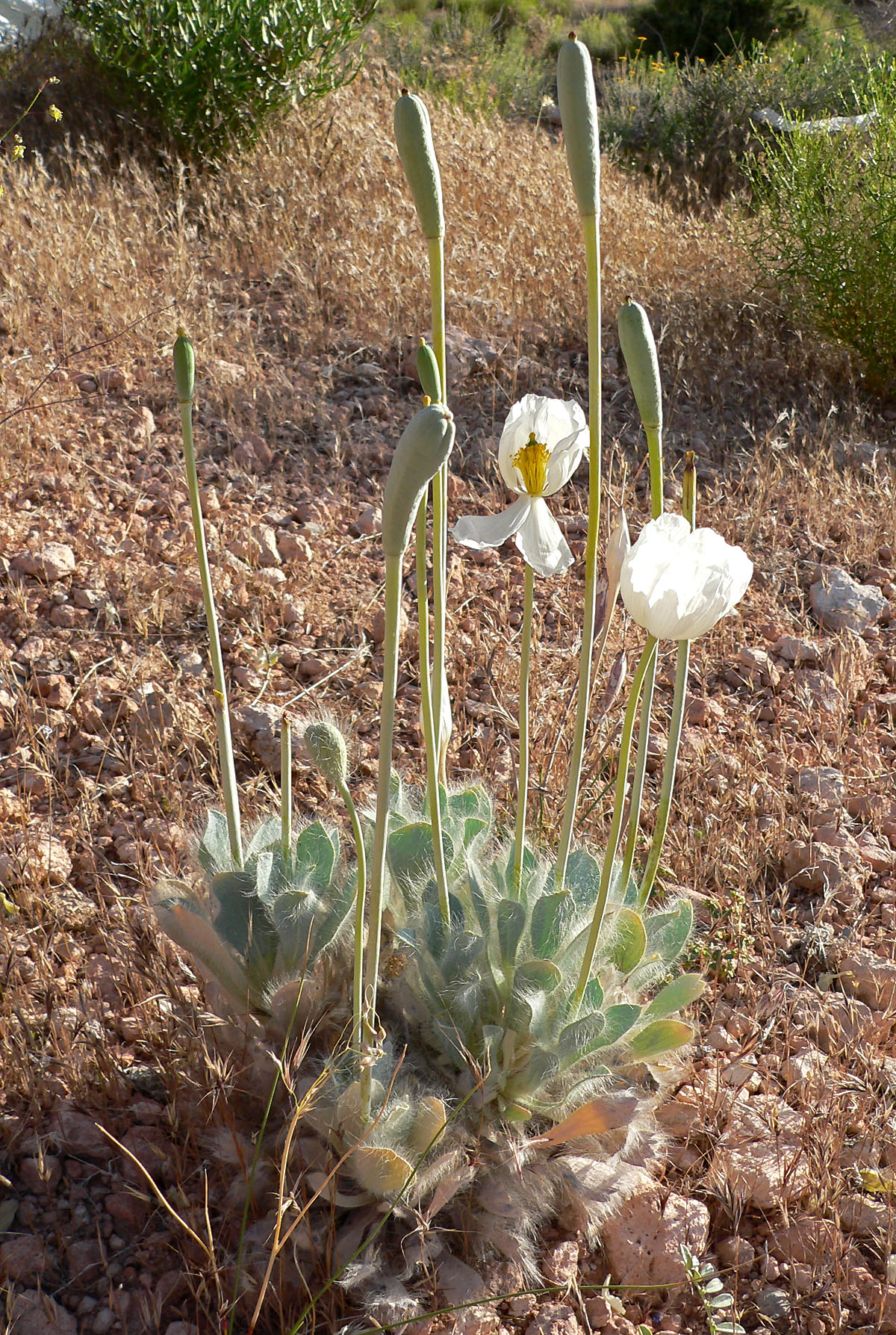- Arctomecon
Taxobox

image_caption = "Arctomecon merriamii "
name = "Arctomecon"
regnum =Plant ae
divisio =Magnoliophyta
classis =Magnoliopsida
ordo =Ranunculales
familia =Papaveraceae
genus = "Arctomecon"
genus_authority = Torr. & Frém.
subdivision_ranks = Species
subdivision = "Arctomecon californica " "Arctomecon humilis " "Arctomecon merriamii ""Arctomecon" is a
genus of the poppy familyPapaveraceae commonly called the bear poppies or bear-paw poppies, after the distinctive appearance of the leaves. The three species occur only in the eastern part of theMojave Desert ofNorth America , and are all uncommon.The plants consist of one or a cluster of basal rosettes of leaves with a generally light blue or grey appearance. Closer examination shows the leaves to be generally wedge-shaped, with the end of each divided into several teeth, and entirely covered with long hairs 5-15 mm in length. The effect is that of a hairy
bear paw, whence both common and scientific name ("arktos" bear + "mecon" poppy). The solitary terminal flowers are typical of poppies, with 2-3 sepals and 4-6 petals, either white or yellow, and starting out as nodding bud before become erect. The fruit capsule has 4-6 valves, opens from the top as it dries, releasing a handful of small wrinkled black seeds."Arctomecon" habitat is typically the harshest and driest soils of the Mojave, where few other plants survive. They especially seem to favor soils with a high
gypsum content.Species
"
Arctomecon californica ", also known as the "Las Vegas bear poppy", is the largest of the genus, with stems up to 2 feet high and bright yellow flowers up to 3 inches across. Its range centers around the hills east ofLas Vegas, Nevada , in theGrand Canyon National Park , and in theLake Mead National Recreation Area ; it may occasionally be seen growing in vacant lots in the city."
Arctomecon merriamii " is similar to "A. californica", but has white flowers. It occurs in the Mojave west and north of Las Vegas, as far asDeath Valley ."
Arctomecon humilis " also has white flowers, but is much smaller and shorter, and only sparsely hirsute. It occurs only a small area nearSt. George, Utah .References
* Christopher Grey-Wilson, "Poppies" (Portland: Timber Press, 2000) ISBN 0-88192-503-9 pp. 226-229
Wikimedia Foundation. 2010.
